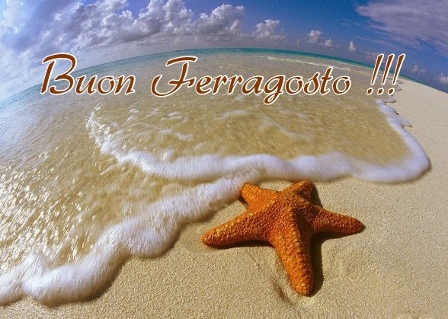
WTI Magazine #82 2016 August 19
Author : Elda Buonanno Foley Translation by:
While I was working on my American schedule on August 15th, I got many emails and text messages wishing me "Buon Ferragosto," "Buona Festa" from my Italian friends and family. It took me a couple of seconds to realize that in Italy, this very day is a day of celebration: it marks the highest peak of the summer season, not to mention the one day when the whole country, in one way or another, pauses for a few hours and celebrates another important festivity. This is to say that Ferragosto is not simply a day of celebration but rather a day when traditions are evoked, emphasized and celebrated.
Am I emphasizing another typical stereotype of our Bel Paese? The idea that Italians are only "festaioli" (party lovers)? Absolutely not! I am taking another item of our solid and millennial history to clear up some confusion and misunderstanding while addressing another stereotype. In order to do that, I need to start from the beginning as all our stereotypes, those symbols that seem to mirror our Italian culture and society, have indeed profound roots.
As a matter of fact, Ferragosto is a very old day of celebration that goes back to the Roman Empire and specifically the Feriae Augusti (Latin for the Rest of August – The Emperor) that the great Roman Emperor, in the year 18 B.C., established to celebrate the end of the farming year. Originally, the feast was on August 1st, and only later the Catholic Church moved the celebration to August 15th, the day of the Assumption of the Virgin Mary. During this day, in the whole Roman Empire and after, horses, bulls, and donkeys races were organized and the workforce would enjoy a day off while embellishing houses, streets and shops with flowers and ribbons. A day during which the pagan idea and later the Christian one combined to become, over the centuries, the symbol of a very special day.
As a matter of fact, August 15th has become a Catholic holiday during which the religious world celebrates the moment when Mary, mother of Jesus, died and went to Heaven with her soul and her body: hence the "Assumption" that, according to the Catholic dogma, is the anticipation of the resurrection of the body that will come for all humanity at Judgment day.
It should not surprise if on this day, special masses, processions and holy celebrations are organized all over Italy: however, the pagan nature of the feast seems to overshadow the holy one. Barbeques, picnics, parties at the beach and trips to vacation resorts, or the lake and the mountain are very popular on this day and some popular sites are completely jammed by people.
Thus, pagan and Christianity cohabit in this day and exalt tradition in events such as the famous horse race of Siena, The Palio, the race of the "Gigante e Gigantessa" in Messina, Sicily, a race between two huge paper characters/puppets that are brought all over the city by selected carriers. In Puglia, the Procession in Santa Maria di Leuca during which, the statue of the Virgin Mary is brought by boats, is very popular, or the Night of the Taranta, a very popular music event devoted to the recovery and the valorization of a typical dance "Pizzica"; The Palio Remiero in Verbania, the procession in historical costumes in Ischia, the "Medieval" Celebration in Ventimiglia, and so forth. The list of events (including the food ones), concerts and parades is simply too long to be placed here without taking up the majority of the article.
In sum, yet again I have tried to indicate that we, the Italians, are indeed very fond of our celebrations and special events: we work a lot to maintain certain traditions and keep them alive while perpetrating the real essence, the core of our culture and society within the diverse community we are living in. To the next!



